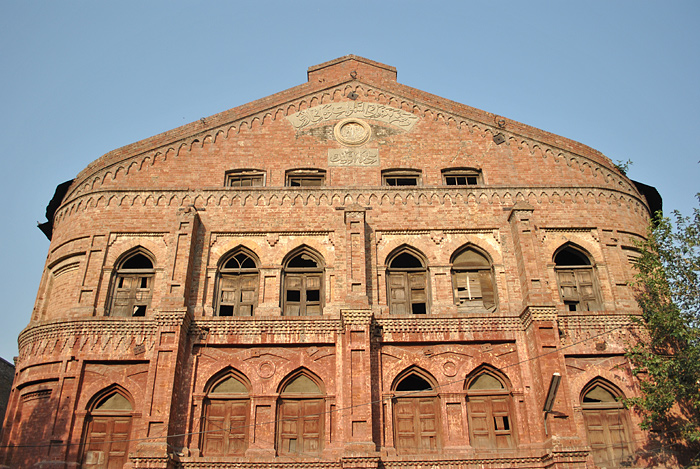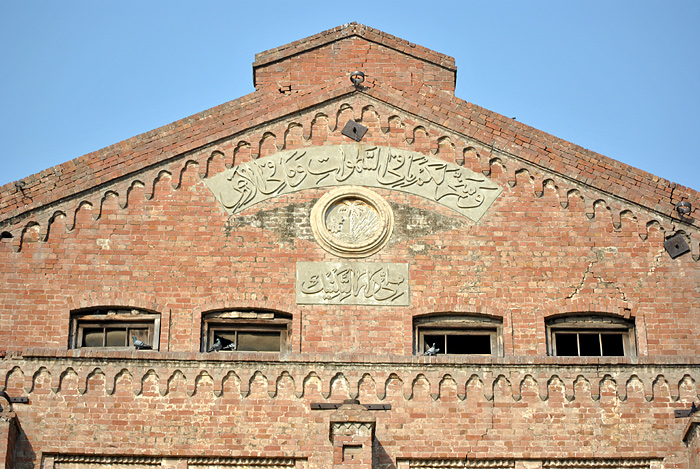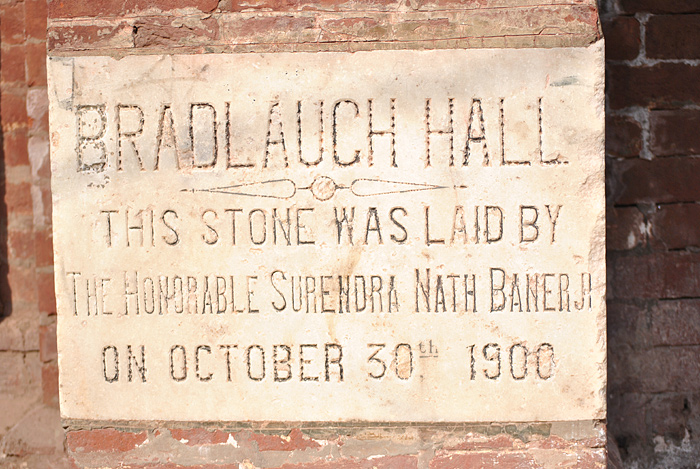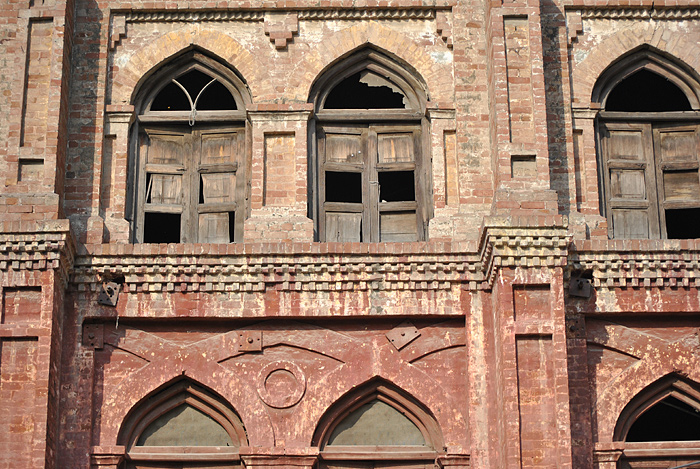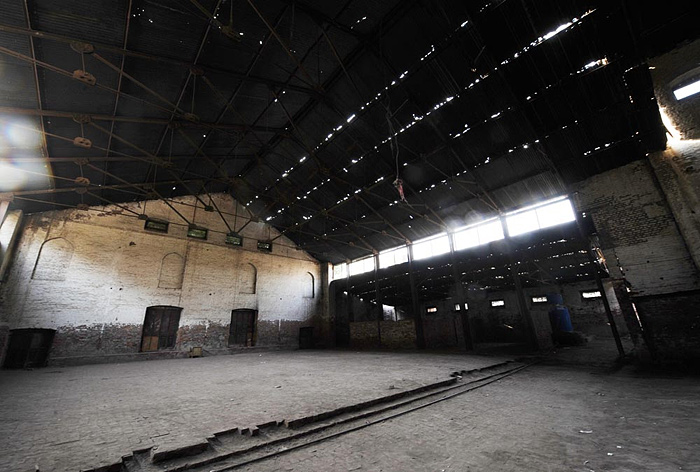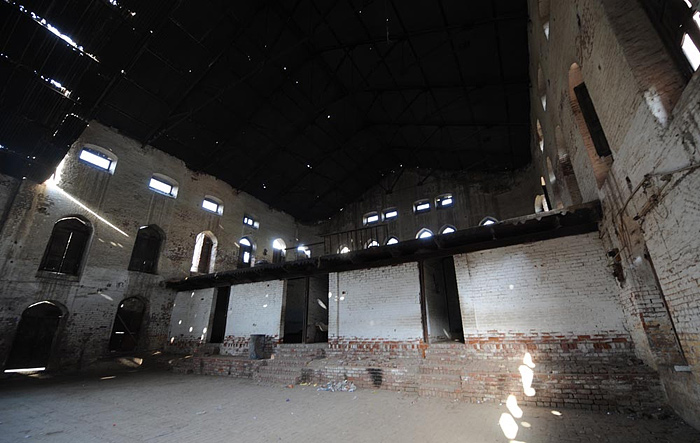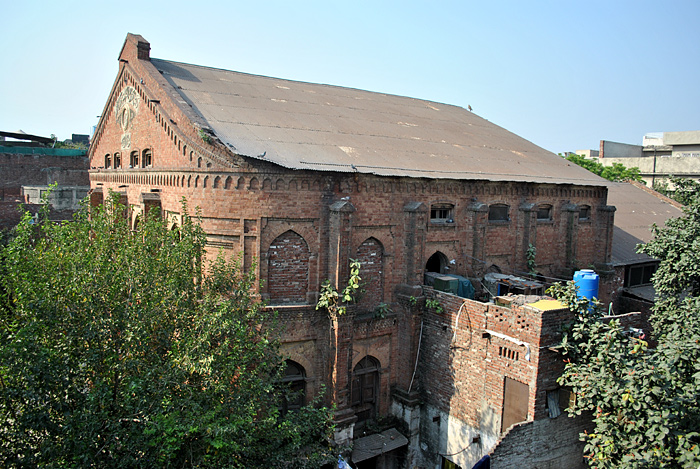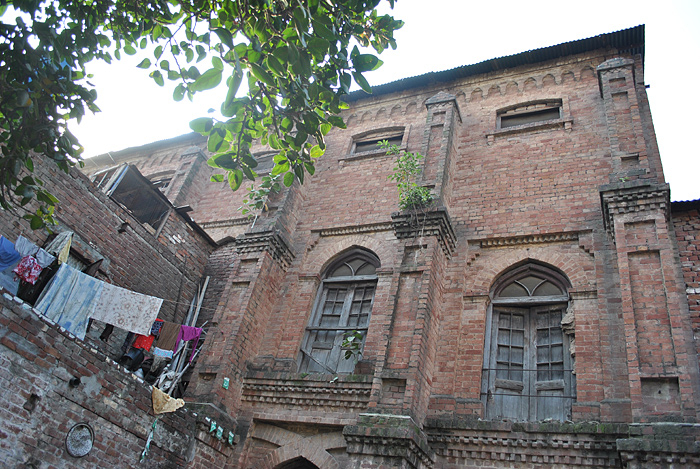Bradlaugh Hall
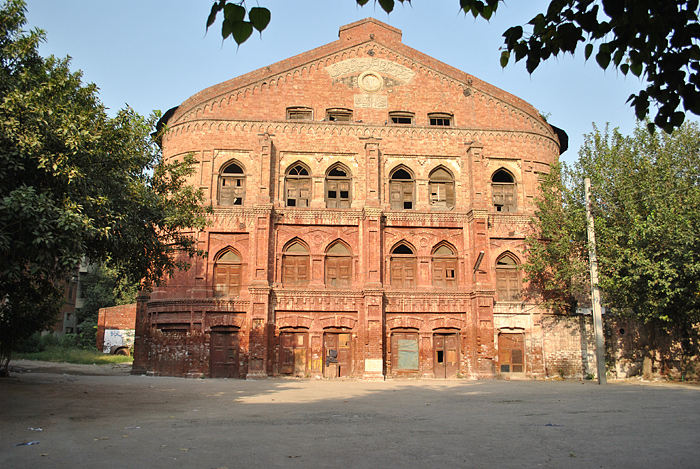
Bradlaugh Hall fue construido a finales del siglo XIX a lo largo de Rattigan Road de Lahore. Se estableció gracias a los esfuerzos de recaudación de fondos del Congreso Nacional de la India, que celebró su período de sesiones anual en Lahore en 1893. La planificación de esa reunión llevó casi cinco años, ya que la necesidad de un espacio dedicado a los eventos políticos en Lahore había sido aguda durante mucho tiempo. Ya en 1888, un destacado editor de periódicos llamado Sardar Dyal Singh pudo asegurar Lahore como lugar de reunión de la asociación india en 1893. Singh fue elegido presidente del comité de recepción de la sesión y la venta de entradas fue suficiente para ahorrar 10.000 rupias. después de cubrir todos los gastos. Esta pequeña suma se convirtió en el nido de ahorros que permitió la construcción de Bradlaugh Hall.
El nombre del edificio honra a Charles Bradlaugh, un diputado británico de finales de la era victoriana que apreciaba la India y era franco en su creencia en la justicia social. El Sr. Bradlaugh visitó la India en 1889 y asistió a la quinta sesión anual del Congreso Nacional Indio. En reconocimiento a sus actividades, Surendar Nath Banerji, un alto líder del Congreso Nacional de la India, instaló la placa de dedicación en Bradlahugh Hall el 30 de octubre de 1900.
Durante las décadas siguientes, el salón acogió a un verdadero "quién es quién" de los defensores del subcontinente, que alcanzó su punto máximo en las décadas de 1920 y 1930 (consulte el artículo de Aown Ali, a continuación, para obtener más detalles). Los años dorados del edificio llegaron a su fin en 1946 cuando la mayoría de la Liga Musulmana en Pakistán significó que el Congreso Nacional Indio ya no podía reunirse aquí. La sala se usó luego como almacén de grano, hogar para migrantes de Amritsar y almacén para trabajadores del hierro.
Este interludio llegó a su fin en 1956 cuando la sala y el vecindario circundante se inundaron, inutilizando la sala como almacén y lugar de habitación. Luego fue entregado al Instituto Técnico Nacional ("Milli Techniki Idara"). Aunque el edificio fue utilizado por la escuela durante varias décadas, el instituto cerró a fines de la década de 1990. La administración luego alquiló el edificio a maestros del gobierno cercano. escuelas y otros clientes a corto plazo. Trágicamente, la división y el alquiler de pequeñas porciones de la sala a varios inquilinos que tenían poco conocimiento del valor histórico de la propiedad provocó daños generalizados en el interior del edificio. En su estado actual , el edificio es casi una ruina, pero se puede salvar lo suficiente como para que un determinado programa de rehabilitación lo devuelva a su gloria legítima.
Bradlaugh Hall was built at the tail end of the 19th century along Lahore's Rattigan Road. It was established through the fundraising efforts of the Indian National Congress, which held its annual session in Lahore in 1893. Planning for that meeting had taken nearly five years, as the need for a dedicated space for political events in Lahore had long been acute. As early as 1888 a prominent newspaper publisher named Sardar Dyal Singh, was able to secure Lahore as the meeting place for the Indian association in 1893. Singh was elected chairman of the reception committee of the session, and ticket sales were sufficient to save Rs 10,000 after covering all expenses. This small sum became the nest egg enabling the construction of Bradlaugh Hall.
The name of the building honors Charles Bradlaugh, a British MP in the late Victorian era who was fond of India and outspoken in his belief in social justice. Mr. Bradlaugh visited India in 1889 and attended the 5th annual session of the Indian National Congress. In recognition for his activities, Surendar Nath Banerji--a senior leader of the Indian National Congress--installed the dedication plaque at Bradlahugh Hall on October 30, 1900.
Over the following decades the hall played host to a veritable "who's who" of advocates for the subcontinent, reaching a peak in the 1920s and 30's (see Aown Ali's article, below, for more detail). The building's golden years came to an end in 1946 when the Muslim League's majority in Pakistan meant that the the Indian National Congress could no longer meet here. The hall was then used as a storehouse for grain, a home for migrants from Amritsar, and a storehouse for ironworkers.
This interlude came to an end in 1956 when the hall and the surrounding neighborhood were flooded, making the hall useless as a warehouse and place of habitation. It was then handed over to the National Technical Institute ("Milli Techniki Idara'). Although the building was used by the school for several decades the institute closed down in the late 1990s. The management then rented the building out to teachers of nearby government schools and other short-term clients. Tragically, the partitioning and renting out of small portions of the hall to various tenants who had little understanding of the historical value of the property lead to widespread damage to the interior of the building. In its present state, the building is nearly a ruin, but enough of it is salvagable that a determined rehabilitation program could restore it to its rightful glory.
